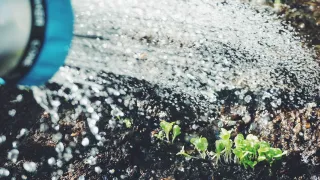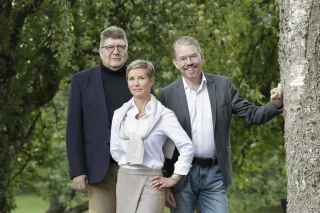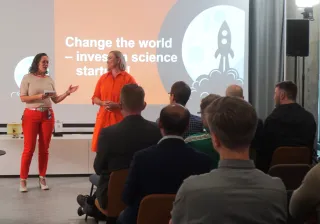Water is the basis of life and essential for all life and processes we know. The availability of water and its purity have been considered self-evident, and that is what they used to be. In Finland, we have had plenty of water and, we have learnt how to purify and recycle it and redistribute it as clean water to consumers. Naturally, we have faced some challenges along the way, and there are good reasons to be concerned about water on a continuous basis.
The world around us is changing and we are facing new challenges, such as climate change, security threats, increase in water consumption and, consequently, the sufficiency of water supplies. At that point, the existing solutions will not suffice, and they will not guarantee functional and successful societies.
Worldwide, agriculture currently uses 70% of all pure water consumed for irrigation purposes. Cracked soil, dried vegetation and famine are matters we mostly know from news from Africa. However, climate change researchers are already warning us about the increasing aridity in Europe as well. The Iberian Peninsula is becoming desert. The areas north of the Mediterranean and even Central Europe have already suffered from lack of water.
According to climate forecasts, Finland will have areas suffering from drought as early as in the 2030s if and when the current development continues.
Still, the world mostly consists of water. To establish that, all we need to do is examine the Earth from the direction of the Pacific Ocean. What we primarily lack is potable fresh water. Within the EU, there has been talk that instead of addressing the status of water in general, we should discuss various levels of purity and water suited for different uses.
Industrial processes and irrigation do not always require water suited as drinking water. It is more sensible to recycle water from one use to another, and to purify it only when necessary. With consecutive uses, the same water suffices for several users. The condition for doing so is that it is possible to analyse the water quality rapidly and precisely, and that the necessary purification processes are sufficiently good for each need. Even as it is, it is already possible to purify poor-quality waste water or sea water into potable water, and closed-loop water recycling is also often possible.
The water raining on the fields is free of charge, but all other water bears costs in the form of pipes, pumps, valves and, first and foremost, the energy needed to transfer it. This has an impact on food prices. Of course, irrigation may bring some benefits as well. When the amount of water is optimised to meet the needs of the plants, and water is used for spreading nutrients and the necessary chemicals, the quantity and quality of the crops will improve. It also enables production in controlled indoor facilities and, for example, in urban environments close to the consumers in accordance with the concept of urban farming.
In irrigation, the current trend is to go towards needs-based irrigation. The objective is simple: irrigating where water is needed, when it is needed and only to the extent that plants can use it. As a result, the plants will do better, the crops will get bigger and their quality will improve, and the water and energy consumption will decrease.
Unfortunately, this is not yet easy, nor sufficiently cost-effective. The amount of water needed by a plant and the timing of irrigation measures may vary greatly. Even in the same field, there may be areas requiring different treatment. Recognising such areas, monitoring the need of water of the plants grown in them and the planning of necessary irrigation taking also account of the impacts of weather is a highly demanding entity that requires extensive use of sensors and understanding of the data collected. A targeted supply of water also requires an adaptable irrigation system.
The hype words of the ICT world − IoT, artificial intelligence, big data and digitalisation − have made a very strong entry into the field of water management and irrigation control as well. They will bring intelligence and efficiency to the use and recycling of water that are necessary for saving fresh water.
Water is something the whole world has in common, and the EU is also paying increasing attention to it. VTT is involved in the EU’s ICT4Water cluster and the European Water Technology Platform (WssTP), defining common targets of development and a common roadmap for generating smart services related to water. In addition to technological development, the efforts include a lot of business activities and measures supporting the mainstreaming of solutions. Only technology that is in use matters. In the big picture, ensuring that everyone has access to sufficient amounts of water is one of our most essential things.
Practical measures are also needed. As part of the H2020 programme, VTT leads the SWAMP project (Smart Water Management Platform [for Precision Irrigation]), a joint venture between the EU and Brazil. It develops and tests automatic precision irrigation solutions and water management for different purposes in different environments on the shores of river Po in the Brazilian Highlands. The project develops solutions for measuring the situation of the soil and plants, analysing how much water the plants need and smart control of irrigation so that as many of the drops of water pumped to the fields as possible end up for the purpose of producing crops of higher quality and quantity.
Water is the basic condition of life. The sufficiency of fresh water is a challenge. Smart systems enhance the use of water to make smaller amount of high-quality water last for a larger group of people. Once the solutions can be rendered affordable and scalable, they can be made available to everyone. For providing a better life.
Read more: VTT policy brief – Towards a resilient society with smart water solutions





